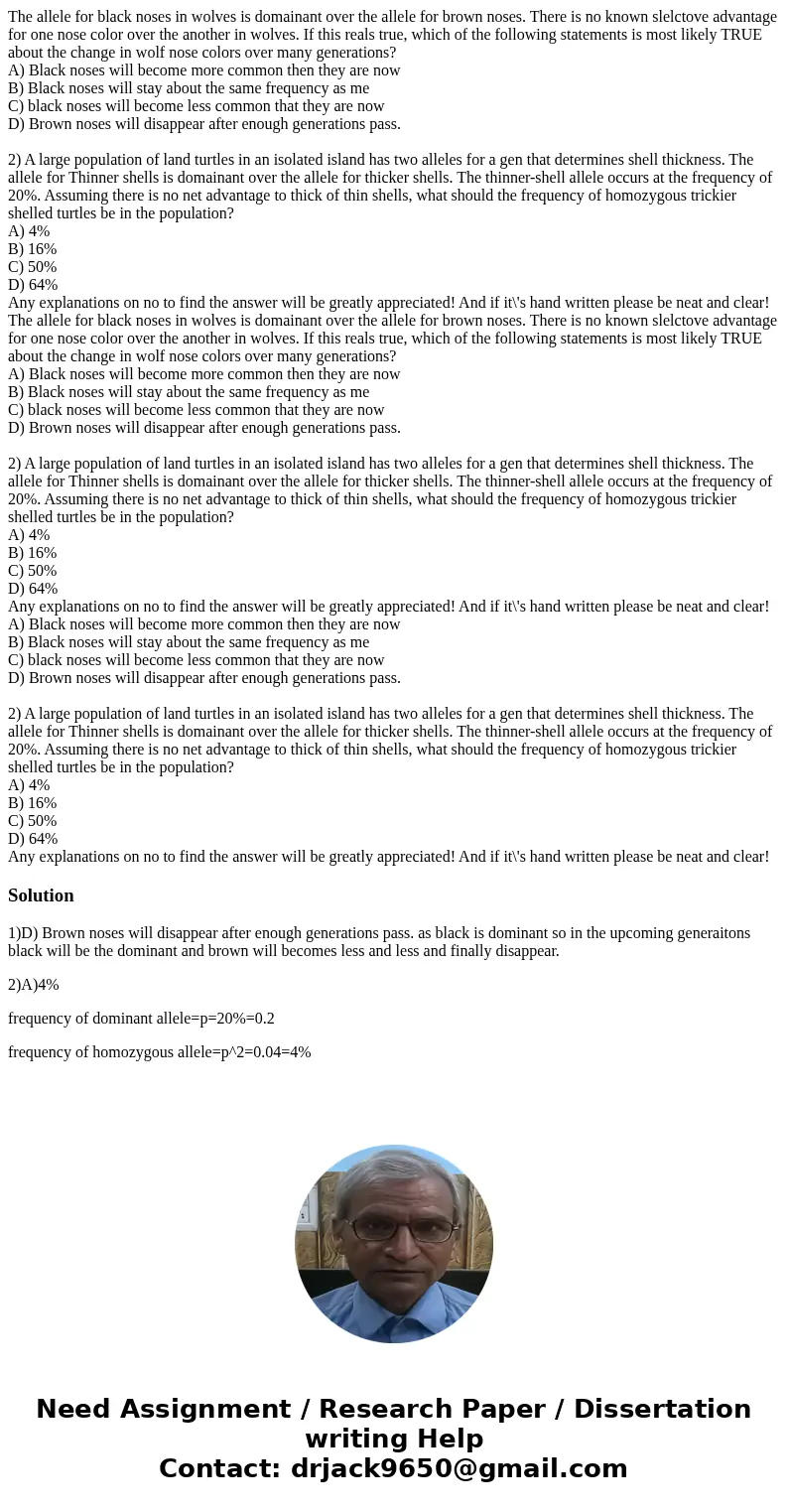The allele for black noses in wolves is domainant over the a
The allele for black noses in wolves is domainant over the allele for brown noses. There is no known slelctove advantage for one nose color over the another in wolves. If this reals true, which of the following statements is most likely TRUE about the change in wolf nose colors over many generations?
A) Black noses will become more common then they are now
B) Black noses will stay about the same frequency as me
C) black noses will become less common that they are now
D) Brown noses will disappear after enough generations pass.
2) A large population of land turtles in an isolated island has two alleles for a gen that determines shell thickness. The allele for Thinner shells is domainant over the allele for thicker shells. The thinner-shell allele occurs at the frequency of 20%. Assuming there is no net advantage to thick of thin shells, what should the frequency of homozygous trickier shelled turtles be in the population?
A) 4%
B) 16%
C) 50%
D) 64%
Any explanations on no to find the answer will be greatly appreciated! And if it\'s hand written please be neat and clear!
The allele for black noses in wolves is domainant over the allele for brown noses. There is no known slelctove advantage for one nose color over the another in wolves. If this reals true, which of the following statements is most likely TRUE about the change in wolf nose colors over many generations?
A) Black noses will become more common then they are now
B) Black noses will stay about the same frequency as me
C) black noses will become less common that they are now
D) Brown noses will disappear after enough generations pass.
2) A large population of land turtles in an isolated island has two alleles for a gen that determines shell thickness. The allele for Thinner shells is domainant over the allele for thicker shells. The thinner-shell allele occurs at the frequency of 20%. Assuming there is no net advantage to thick of thin shells, what should the frequency of homozygous trickier shelled turtles be in the population?
A) 4%
B) 16%
C) 50%
D) 64%
Any explanations on no to find the answer will be greatly appreciated! And if it\'s hand written please be neat and clear!
A) Black noses will become more common then they are now
B) Black noses will stay about the same frequency as me
C) black noses will become less common that they are now
D) Brown noses will disappear after enough generations pass.
2) A large population of land turtles in an isolated island has two alleles for a gen that determines shell thickness. The allele for Thinner shells is domainant over the allele for thicker shells. The thinner-shell allele occurs at the frequency of 20%. Assuming there is no net advantage to thick of thin shells, what should the frequency of homozygous trickier shelled turtles be in the population?
A) 4%
B) 16%
C) 50%
D) 64%
Any explanations on no to find the answer will be greatly appreciated! And if it\'s hand written please be neat and clear!
Solution
1)D) Brown noses will disappear after enough generations pass. as black is dominant so in the upcoming generaitons black will be the dominant and brown will becomes less and less and finally disappear.
2)A)4%
frequency of dominant allele=p=20%=0.2
frequency of homozygous allele=p^2=0.04=4%

 Homework Sourse
Homework Sourse